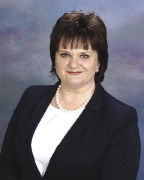Green building practice is a process encompassing planning, design, construction, operations and end-of-life recycling. People tend to neglect the last item and forget how harmful disposal of material is in landfills and how long the decomposition process takes, yet it is extremely important as it plays a role in determining the choice of materials.
PCGNY is currently working on a major 36-roof replacement project for a single client which involves replacing a conventional sheet roofing system with a sustainable liquid alternative. Though the initial cost is somewhat higher, the ROI will prove far greater in the long run as it will prolong the life expectancy of the new roofing system by an additional 25 years. In addition, it is a healthier alternative for the building's occupants and for the environment and will give stakeholders the option of using the roofs as gardens or terraces in the future.
Though budget constraints are always a huge factor in selecting the right roofing materials and looking for the most cost-effective solutions, green roofs have proved their value in the marketplace. For example, an apartment community on Boston's Boylston St. recently completed a green roof installation which cost $112,500. It is now generating an additional $300 to $500 per month in revenue, or about $120,000/year in additional revenue for 25 apartments. J.P Morgan has estimated that the installation increased the value of the property by $2.4 million.
PCGNY believes in going above and beyond in seeking the client's input before beginning any work. Transparency, open communication and total collaboration at every stage of the process ensure that we understand all concerns and goals and are able to make recommendations that will create the most value for all stakeholders on all levels.
It has been said that inventions are born of necessity - to rephrase: challenging problems inspire creative solutions. While building codes have regulated conventional construction of buildings emphasizing life and fire-safety concerns for years, only recently have new regulations on energy efficiency and higher performance prompted the creation of the International Green Construction Code.
Many available state and government incentives significantly contributed to the implementation of green, environmentally safer and energy efficient construction. For those who are serious about the well-being of building occupants, companies such as EcoChi offer "creative solutions developed beyond the conventional realm of form and function," solutions that "resonate deeply with the inhabitants of a space." The dynamic approach developed by founder and president, Debra Duneier, "meticulously blends both ancient and modern lessons of sustainable practices, environmental psychology, and classical Feng Shui to revolutionize how people feel when they are indoors." It takes sustainability to another level by combining it with a holistic approach of the ancient world.
Green roofs is a growing trend: There has been a 24% growth rate in the installation of green roofs in 2012. Most green roofs have been installed in Washington, D.C., followed by Chicago and New York City. Recent studies predict green roofs and green walls will become a $7.7 billion market by 2017, driven by mandates and available incentives around the globe. Of course, budget concerns will always be prominent, yet costs and benefits must we weighed individually and depend on the scope of work, choice of systems (intensive vs. extensive) and deciding between green roofs, eco roofs or terraces with limited planter vegetation. The possibilities are endless and need to be tailored individually.
Dorothy Wasiak is a vice president at PCGNY Corp., New York, N.Y.
If you are considering roof replacement, please contact me at [email protected]

Thanks for Reading!
You've read 1 of your 3 guest articles
Register and get instant unlimited access to all of our articles online.
Sign up is quick, easy, & FREE.
Subscription Options
Sign up is quick, easy, & FREE.
Already have an account? Login here






